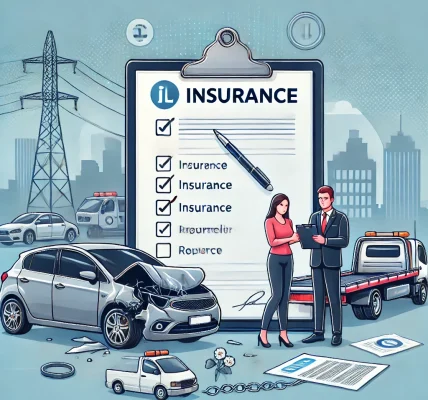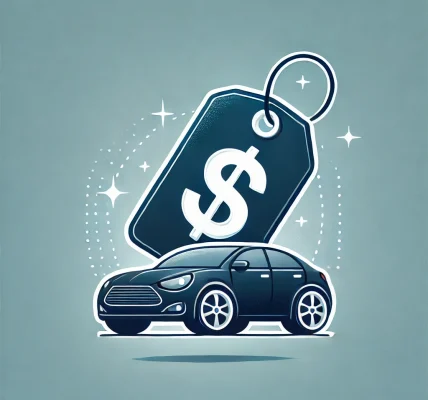Owning a classic or vintage car is a dream for many auto enthusiasts. These timeless beauties not only carry a rich history but also require special care and protection. Unlike standard cars, insuring a classic car requires a tailored approach to ensure its full value is covered. In this comprehensive guide, we will explore everything you need to know about insuring a classic or vintage car.
Understanding Classic and Vintage Car InsuranceClassic and vintage car insurance is different from standard auto insurance. These vehicles often appreciate in value rather than depreciate, making them unique in the eyes of insurance companies. Policies for these cars are designed to provide specialized coverage that reflects their market and sentimental value.
What Qualifies as a Classic or Vintage Car?Insurance providers categorize classic and vintage cars based on specific criteria:
Classic Cars: Generally, vehicles that are 20 to 40 years old, well-maintained, and preserved in original condition.
Vintage Cars: Vehicles that are older than 40 years and maintained in their authentic form.
Antique Cars: Typically, cars over 45-50 years old, often classified under vintage cars.
Exotic or Collector Cars: Limited edition, high-value cars that may not fit in the traditional classic/vintage classification but still require special insurance.
Why You Need Specialized Classic Car Insurance1. Agreed Value vs. Actual Cash ValueUnlike standard auto policies that cover vehicles based on their depreciated market value, classic car insurance offers agreed value coverage. This means that the insurer and the car owner agree on a specific value for the vehicle in case of a total loss.
- Lower PremiumsSince classic cars are usually driven less frequently and are kept in controlled conditions, insurance premiums tend to be lower compared to daily-driven vehicles.
- Coverage for Restoration and RepairsMany classic car policies offer coverage for spare parts, restoration costs, and specialty repairs, ensuring that your car maintains its authenticity.
- Limited Use PoliciesClassic car insurance often comes with mileage restrictions to reflect their limited use, ensuring lower risk and better premiums.
How to Choose the Best Classic Car Insurance Policy1. Evaluate Your Car’s ValueSince classic and vintage cars appreciate over time, you must get an accurate valuation of your vehicle. This can be done through:
Professional appraisals
Auction sale records
Car club references - Compare Insurance ProvidersNot all insurance companies offer specialized classic car coverage. Look for providers known for:
Agreed value coverage
Spare parts reimbursement
Flexible storage and transportation policies - Consider Coverage OptionsMake sure your policy includes:
Comprehensive and Collision Coverage: Protects against theft, fire, vandalism, and accidents.
Spare Parts Coverage: Covers rare and hard-to-find parts for restoration.
Roadside Assistance: Special towing services for classic cars.
Laid-Up Coverage: Insurance for vehicles that are not actively driven but stored safely.
Tips for Reducing Classic Car Insurance Costs1. Store Your Car SecurelyInsurance companies offer discounts for cars kept in climate-controlled garages with security systems. - Limit Your MileagePolicies with limited mileage (e.g., 5,000 miles per year) can significantly lower your premium.
- Join a Classic Car ClubBeing a member of a recognized classic car club can provide access to insurance discounts.
- Maintain a Clean Driving RecordA history of responsible driving will help reduce your insurance rates.
Steps to Insure Your Classic or Vintage CarGather Documentation – Collect all necessary documents such as the car title, maintenance records, and appraisal reports.
Choose an Insurance Provider – Research and compare insurers that specialize in classic car policies.
Get a Professional Valuation – Determine the agreed value with your insurer.
Select Your Coverage – Choose coverage options that best fit your needs.
Understand Policy Restrictions – Be aware of mileage limits and storage requirements.
Regularly Update Your Policy – Adjust your coverage as the car’s value appreciates over time.
ConclusionClassic and vintage cars are more than just vehicles—they are investments and prized possessions. Choosing the right insurance policy ensures that your classic car remains protected while allowing you to enjoy its timeless beauty without worry. By selecting a policy that offers agreed value, restoration coverage, and other specialized benefits, you can safeguard your vehicle for generations to come.
If you own a classic or vintage car, take the time to compare policies, find the best insurer, and ensure that your beloved automobile is covered adequately. Happy driving!


